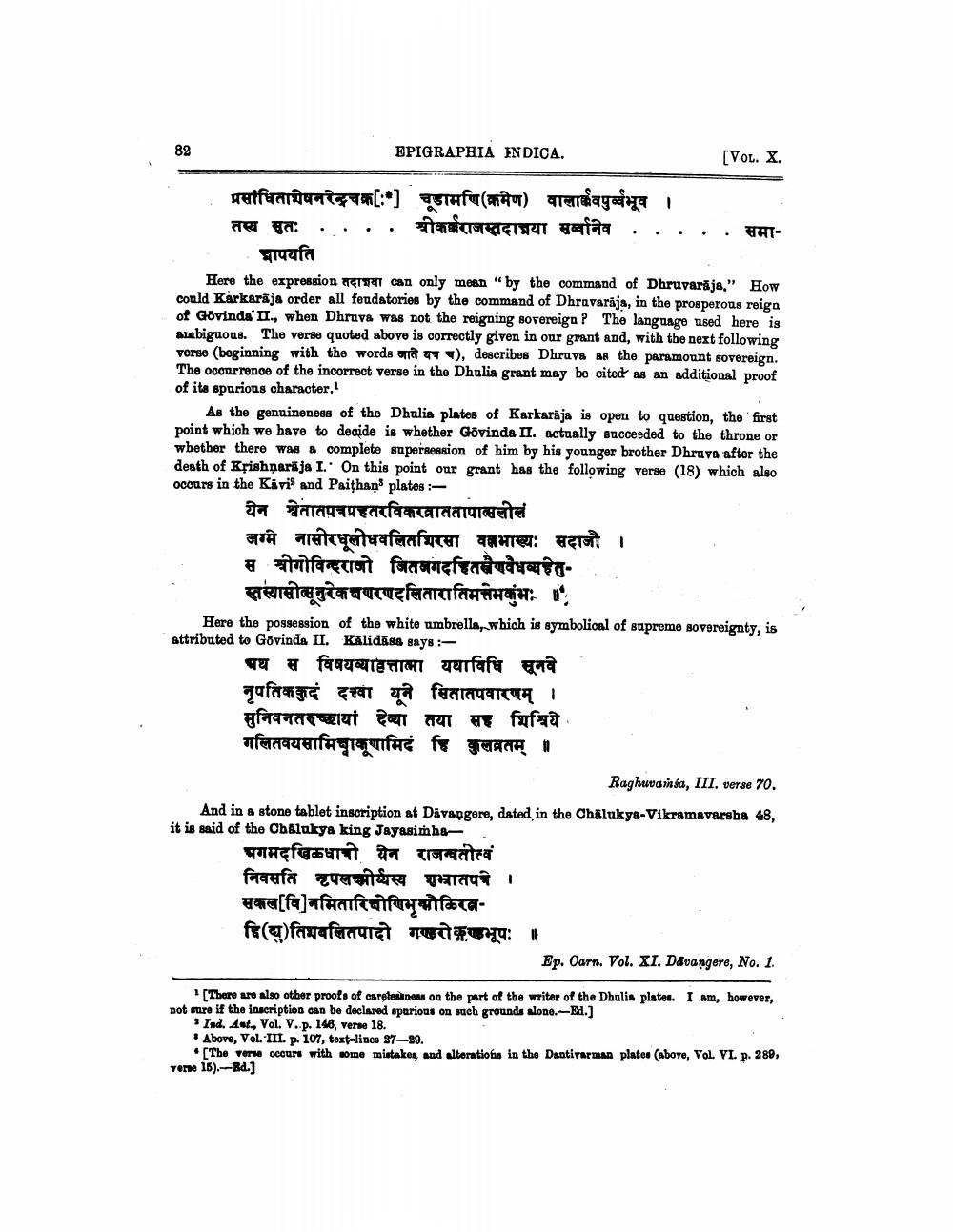________________
EPIGRAPHIA INDICA.
[Vol.x.
प्रसाधिताशेषनरेन्दचक्र[:"] चूडामणि (क्रमण) वालावपुर्बभूव । तस्य सुतः . . . . श्रीकबराजस्तदानया सर्वानेव . . . . . समा
मापयति Here the expression TTTT can only mean" by the command of Dhruvarija." How conld Karkaraja order all feudatories by the command of Dhravaraja, in the prosperous reiga of Govinda II., when Dhruva was not the reigning sovereiga ? The language used here is arabiguous. The verse quoted above is correctly given in our grant and, with the next following verse (beginning with the words जाति यत्र च), describes Dhruva as the paramount sovereign. The occurrence of the incorrect verse in the Dhulia grant may be cited as an additional proof of its sparious character.!
As the gennineness of the Dhulis plates of Karkarija is open to question, the first point which we have to deaide is whether Govinda II. actually succeded to the throne or whether there was a complete supersession of him by his younger brother Dhrava after the death of Krishnarāja I. On this point our grant has the following verse (18) which also occurs in the Kavi and Paithans plates:
येन श्वेतातपत्रप्रहतरविकरवाततापात्सलील जग्मे नासीरधूलोधवलितभिरसा वनभाख्यः सदाजौ । स श्रीगोविन्दराजो जितजगदहितलैणवैधव्यहेतु
स्तस्यासीत्सूनुरेकक्षणरणदलितारातिमत्तेमकुंभः । Here the possession of the white umbrella, which is symbolical of supreme sovereignty, is attributed to Govinda II. Kalidasa says:
पथ स विषयव्याहत्तात्मा यथाविधि सूनवे नृपतिककुदं दत्वा यूने सितातपवारणम् । मुनिवनतरच्छायां देव्या तया सह मिश्रिये गलितवयसामिाकूणामिदं हि कुलव्रतम् ॥
Raghuvansa, III. verse 70. And in a stone tablet inscription at Davangere, dated in the Chalukya-Vikramavarsha 48, it is said of the Chalukya king Jayasimha- .
भगमदखिळधाची येन राजवतीत्वं निवसति पलमीर्यस्य शुभ्वातपणे । सकल[वि नमितारिशोणिभूमोकिरनहि(धु)तिमवलितपादो गडरोकण्डभूपः ।
Ep. Carn. Vol. XI. Davangere, No. 1.
[There are also other proofs of carelessness on the part of the writer of the Dhalis plates. I am, however, pot sure if the inscription can be declared sparious on such grounds alone. Ed.]
Ind.dat., Vol. V..p.148, verse 18.
Above, Vol. III. p.107, text-lines 27-29.
•[The verm occurs with some mistakes and alterations in the Dantivarman plates (abore, VoLVLp.2881 vene 15).-Rd.]




